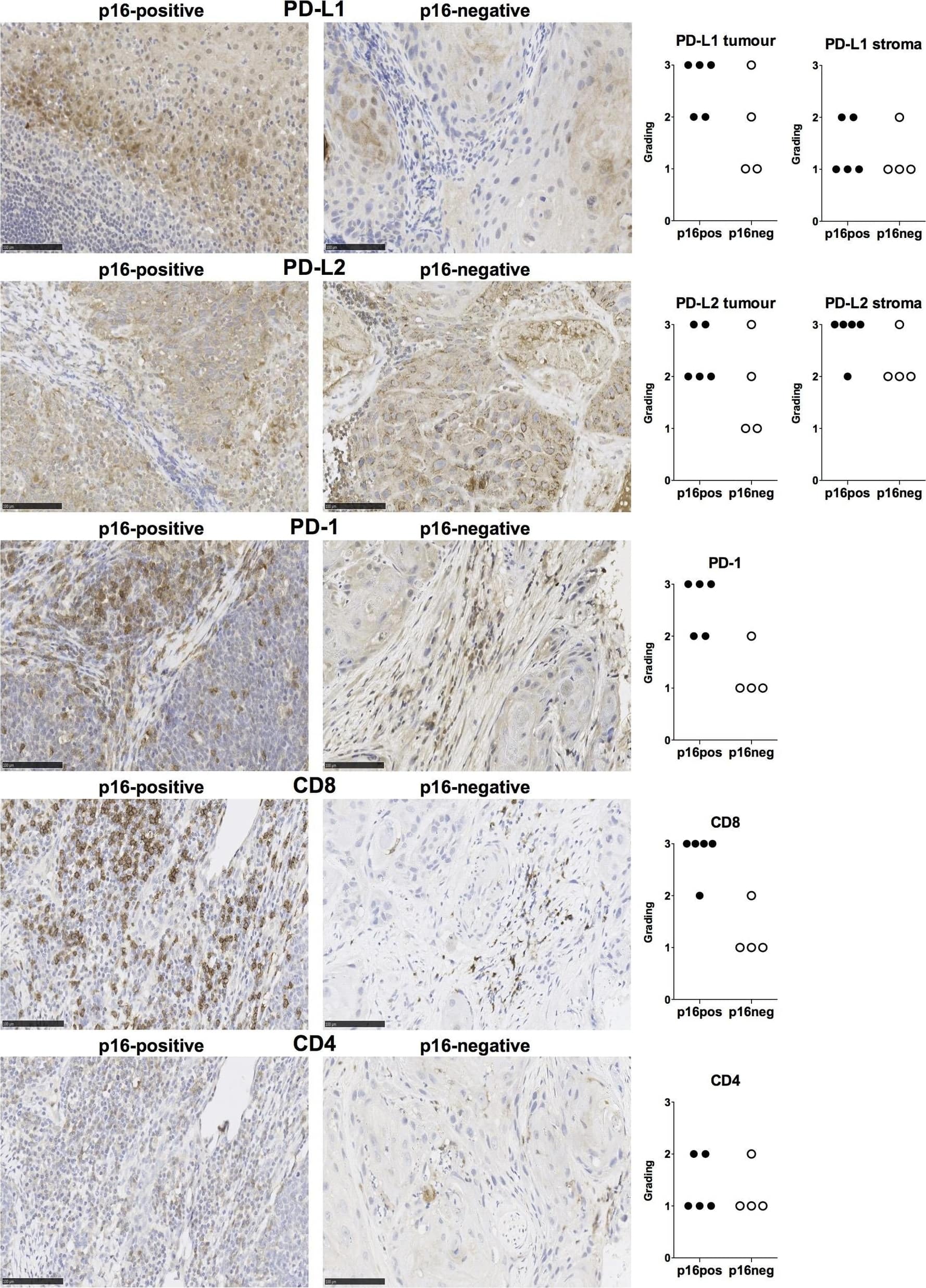Human PD-L2/B7-DC Antibody
R&D Systems, part of Bio-Techne | Catalog # AF1224


Key Product Details
Species Reactivity
Validated:
Cited:
Applications
Validated:
Cited:
Label
Antibody Source
Product Specifications
Immunogen
Leu20-Pro219
Accession # Q9BQ51
Specificity
Clonality
Host
Isotype
Endotoxin Level
Scientific Data Images for Human PD-L2/B7-DC Antibody
Detection of Human PD‑L2/B7‑DC by Western Blot.
Western blot shows lysates of human lung tissue and HDLM-2 human Hodgkin's lymphoma cell line. PVDF membrane was probed with 2 µg/mL of Goat Anti-Human PD-L2/B7-DC Antigen Affinity-purified Polyclonal Antibody (Catalog # AF1224) followed by HRP-conjugated Anti-Goat IgG Secondary Antibody (Catalog # HAF017). Specific bands were detected for PD-L2/B7-DC at approximately 45-50 kDa (as indicated). This experiment was conducted under reducing conditions and using Immunoblot Buffer Group 1.Detection of Human PD-L2/B7-DC/PDCD1LG2 by Immunohistochemistry
PD-L1, PD-L2, PD-1, CD8, and CD4 expression in p16-positive and p16-negative HNSCC. PD-L1, PD-L2, PD-1, CD8, and CD4 expression was assessed in tumor biopsy tissue from five p16-positive and four p16-negative HNSCC patients using immuno-histochemistry (details in Methods). Representative staining (scale bars, 100 μm) and cumulative data of marker expression (grading scale PD-L1/PD-L2: 1, low; 2, moderate; 3 high expression; grading scale PD-1, CD8, CD4: 1, <50 cells/field; 2, 50–150 cells/field; 3, >150 cells/field). Image collected and cropped by CiteAb from the following open publication (https://pubmed.ncbi.nlm.nih.gov/31379843), licensed under a CC-BY license. Not internally tested by R&D Systems.Applications for Human PD-L2/B7-DC Antibody
Blockade of Receptor-ligand Interaction
Immunohistochemistry
Sample: Immersion fixed paraffin-embedded sections of human lung
Western Blot
Sample: Human lung tissue and HDLM‑2 human Hodgkin's lymphoma cell line
Reviewed Applications
Read 1 review rated 5 using AF1224 in the following applications:
Formulation, Preparation, and Storage
Purification
Reconstitution
Formulation
Shipping
Stability & Storage
- 12 months from date of receipt, -20 to -70 °C as supplied.
- 1 month, 2 to 8 °C under sterile conditions after reconstitution.
- 6 months, -20 to -70 °C under sterile conditions after reconstitution.
Background: PD-L2/B7-DC
T cells require a signal induced by the engagement of the T cell receptor and a “co‑stimulatory” signal(s) through distinct T cell surface molecules for optimal T cell activation and tolerance. Members of the B7 superfamily of counter-receptors were identified by their ability to interact with co‑stimulatory molecules found on the surface of T cells. Members of the B7 superfamily include B7-1 (CD80), B7-2 (CD86), B7-H1 (PD-L1), B7-H2 (B7RP-1), B7-H3, and PD-L2 (B7-DC) (1). B7 proteins are immunoglobulin (Ig) superfamily members with extracellular Ig-V-like and Ig-C-like domains and short cytoplasmic domains. Among the family members, they share from 20‑40% amino acid (aa) sequence identity. The cloned human PD-L2 cDNA encodes a 273 aa type I membrane precursor protein with a putative 20 aa signal peptide, a 201 aa extracellular region containing one V-like and one C-like Ig domain, a 24 aa transmembrane region, and a 28 aa cytoplasmic domain. The extracellular domains of mouse and human PD-L2 share approximately 70% aa sequence identity (2). PD-L2 is one of two ligands for programmed death-1 (PD-1), a member of the CD28 family of immuno-receptors. The other identified ligand is PD-L1. Human PD-L1 and PD-L2 share approximately 41% aa sequence identity and have similar functions. PD-L2 is broadly expressed in tissues. Highest expression was detected by Northern blot analysis in heart, placenta, liver, pancreas, spleen, and lymph node. Lower amounts of expression were observed in lung, smooth muscle, and thymus. Expression of PD-L2 on antigen presenting cell has been examined in detail. Resting B cells, monocytes and dendritic cells do not express PD-L2, expression however can be induced by LPS or BCR activation in B cells, INF-gamma treatment in monocytes, or LPS plus IFN-gamma treatment of dendritic cells. PD-L2 expression is also up regulated in a variety of tumor cell lines. On previously activated T cells, PD-L2 interaction with PD-1 inhibits TCR-mediated proliferation and cytokine production, suggesting an inhibitory role in regulating immune responses. In contrast, a co‑stimulatory function for the PD-L2 on resting T cells activated with sub-optimal TCR signals has also been reported (3).
References
- Coyle, A.J. and J-C. Gutierrrez-Ramos (2001) Nature Immunol. 2:203.
- Latchman Y. et al. (2001) Nature Immun. 2:261.
- Carreno, B.M. and M. Collins (2002) Annu. Rev. Immunol. 20:29.
Long Name
Alternate Names
Gene Symbol
UniProt
Additional PD-L2/B7-DC Products
Product Documents for Human PD-L2/B7-DC Antibody
Product Specific Notices for Human PD-L2/B7-DC Antibody
For research use only
